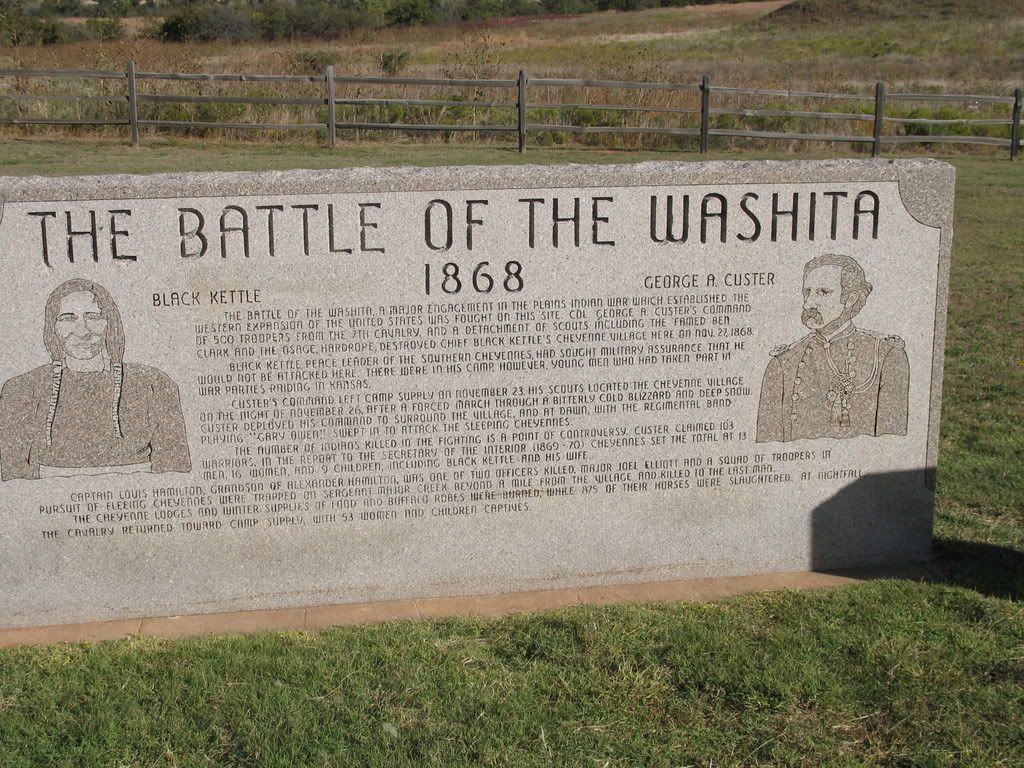The intent to commit genocide at Washita is hidden in plain view, unless key elements are brought together. These are: that the Cheyenne were placed on land where they would starve while promises to avert starvation were broken; that George Bent observed how Civil War soldiers did not harm white women and children by a “code of honor,” while Indian women and children were slaughtered; that Sheridan declared “The only good Indians I ever saw were dead;” and that the War Department did not differentiate between peaceful and warring Indians. Hence, the orders “to kill or hang all warriors.” As the consequence, the intent was to kill all men
of a specific race.
Tag: Cheyenne
Nov 27 2010
142nd Anniversary of the Washita Massacre of Nov. 27, 1868
Nov 20 2009
The 141st Anniversary of the Washita Massacre of Nov. 27, 1868
The intent to commit genocide at Washita is hidden in plain view, unless key elements are brought together. These are: that the Cheyenne were placed on land where they would starve while promises to avert starvation were broken; that George Bent observed how Civil War soldiers did not harm white women and children by a “code of honor,” while Indian women and children were slaughtered; that Sheridan declared “The only good Indians I ever saw were dead;” and that the War Department did not differentiate between peaceful and warring Indians. Hence, the orders “to kill or hang all warriors.” As the consequence, the intent was to kill all men
of a specific race.
Jun 17 2009
Custer, Rape, Genocide, & Happy Meals
Jun 12 2009
“Dead Indian Creek” & Cultural Hegemony
Why say “Dead Warrior Creek,” when racism fuels cultural hegemony so well?
The official name now is Dead Warrior Lake, ending for some a controversy over the lake’s name that has been going on for almost a decade.
– snip –
The first settlers in the area came up with the name after discovering a Cheyenne burial site. Cottonwoods that lined the creek made for a perfect burial site near the tribe’s winter camp.
Nov 22 2008
The 140th Anniversary of the Washita Massacre of Nov. 27, 1868
The intent to commit genocide at Washita is hidden in plain view, unless key elements are brought together. These are: that the Cheyenne were placed on land where they would starve while promises to avert starvation were broken; that George Bent observed how Civil War soldiers did not harm white women and children by a “code of honor,” while Indian women and children were slaughtered; that Sheridan declared “The only good Indians I ever saw were dead;” and that the War Department did not differentiate between peaceful and warring Indians. Hence, the orders “to kill or hang all warriors.” As the consequence, the intent was to kill all men
of a specific race.
Jan 19 2008
“Dead Indian Creek” & Cultural Hegemony
Why say “Dead Warrior Creek,” when racism fuels cultural hegemony so well?
The official name now is Dead Warrior Lake, ending for some a controversy over the lake’s name that has been going on for almost a decade.
– snip –
The first settlers in the area came up with the name after discovering a Cheyenne burial site. Cottonwoods that lined the creek made for a perfect burial site near the tribe’s winter camp.
Nov 27 2007
The 139th Anniversary of the Washita Massacre of Nov. 27, 1868
The intent to commit genocide at Washita is hidden in plain view, unless key elements are brought together. These are: that the Cheyenne were placed on land where they would starve while promises to avert starvation were broken; that George Bent observed how Civil War soldiers did not harm white women and children by a “code of honor,” while Indian women and children were slaughtered; that Sheridan declared “The only good Indians I ever saw were dead;” and that the War Department did not differentiate between peaceful and warring Indians. Hence, the orders “to kill or hang all warriors.” As the consequence, the intent was to kill all men
of a specific race.
We’ll begin with Custer prior to the Washita Massacre along with the fact that the Cheyenne were forced onto land wherein they would starve.


